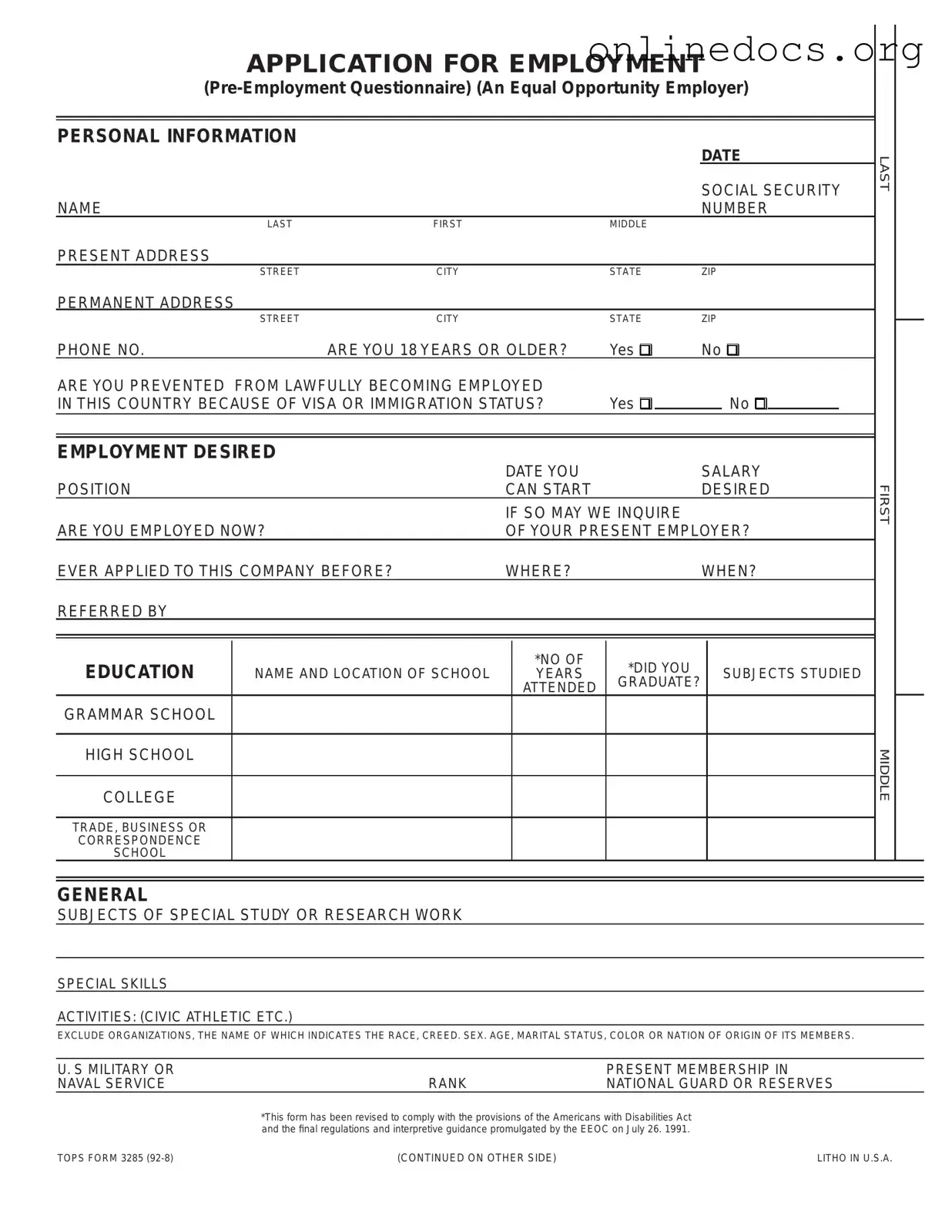The Job Application form is quite similar to the Employment Application PDF form. Both documents serve the primary purpose of collecting essential information about a candidate. They typically ask for personal details, work history, education, and references. The format may differ—one might be digital while the other is printed—but the underlying goal remains the same: to evaluate a candidate's qualifications for a specific position.
The Resume is another document that shares similarities with the Employment Application PDF form. While a resume is often more flexible in format and allows for personal branding, it still conveys key information about a candidate’s skills, experiences, and education. Both documents aim to present a candidate's suitability for a job, but a resume often provides a more comprehensive overview of a candidate's career journey.
The Cover Letter complements both the Employment Application and the Resume. This document allows candidates to express their interest in a position more personally. While the Employment Application PDF form may be more structured, the cover letter provides an opportunity for candidates to highlight specific experiences and explain why they are a good fit for the role. Together, these documents create a fuller picture of the applicant.
The Job Offer Letter is related to the Employment Application PDF form in that it is a follow-up document. Once a candidate has been selected, the job offer letter outlines the terms of employment, including salary, benefits, and start date. While the Employment Application collects information, the job offer letter confirms the outcome of that process and sets the stage for the employment relationship.
The Reference Check form is another document that plays a crucial role in the hiring process. After reviewing the Employment Application PDF form, employers often reach out to references provided by candidates. This document helps verify the information presented in the application and assess the candidate's past performance. It serves as an additional layer of evaluation to ensure the right fit for the company.
To ensure safeguarding during activities, utilizing a carefully drafted Release of Liability form is essential. This document clarifies the responsibilities of each party involved and protects against unforeseen legal consequences. It is particularly valuable for events where participant safety might be a concern.
The Background Check Authorization form is also similar in its purpose. After a candidate submits an Employment Application PDF form, employers may request a background check to validate the information provided. This document allows employers to conduct necessary checks on criminal history, credit history, or employment verification, ensuring that candidates meet the company's standards.
The Skills Assessment form can be considered similar as well. After reviewing the Employment Application PDF form, employers may ask candidates to complete a skills assessment to evaluate their abilities more thoroughly. This document tests specific skills relevant to the job, providing a clearer understanding of a candidate's competencies beyond what is written in the application.
The Interview Evaluation form is another document that complements the Employment Application PDF form. After candidates have been interviewed, hiring managers often fill out this form to assess their performance. It captures observations and impressions, which can be compared with the information provided in the application, aiding in the final hiring decision.
Lastly, the Onboarding Checklist is related to the Employment Application PDF form in the context of the hiring process. Once a candidate is hired, this checklist helps ensure that all necessary paperwork, including the application, is completed and filed correctly. It guides new employees through the initial steps of their employment, ensuring a smooth transition into the company.
